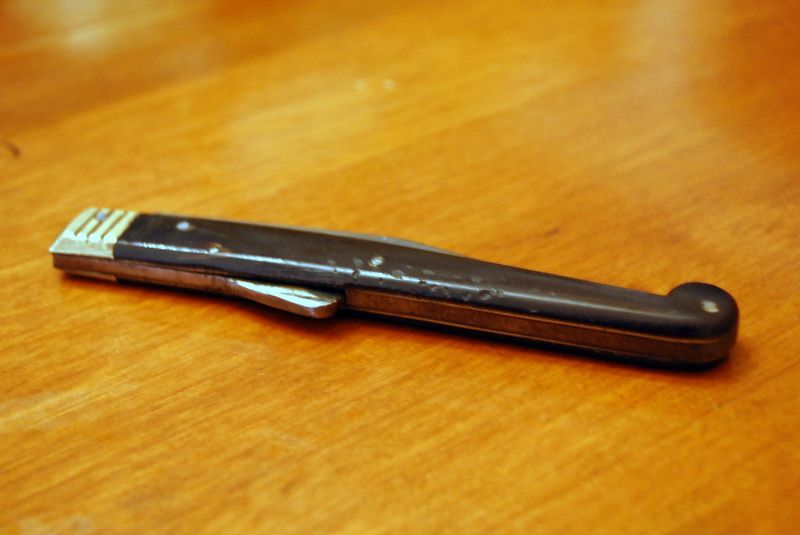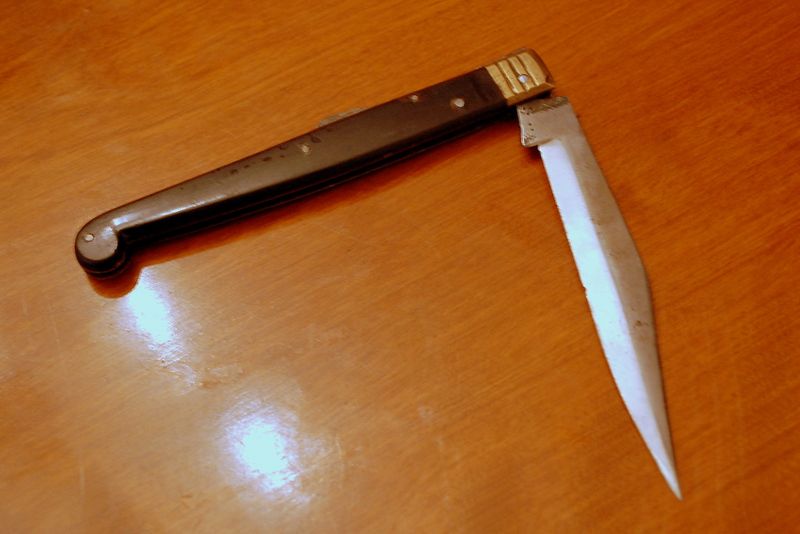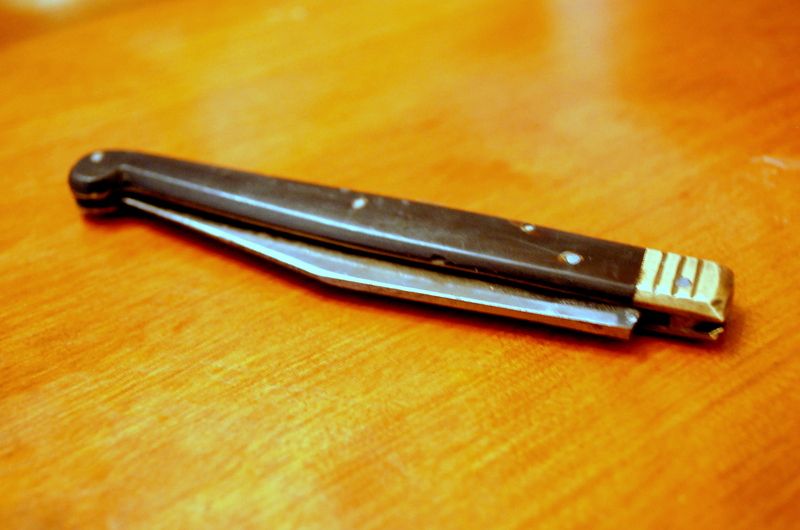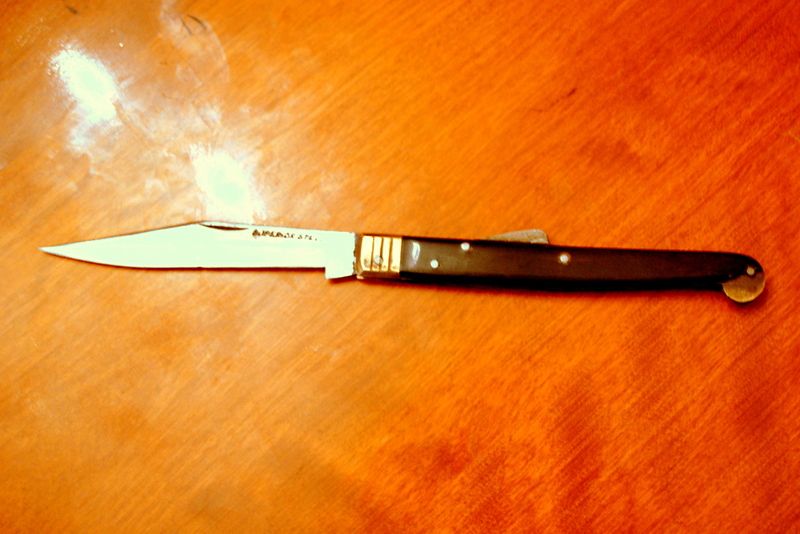Found an interesting Sheffield folding knife at an antique store near Lancaster, PA this afternoon. The style of the knife is interesting and I have not found one like it looking online, it is a locking design with an interesting tab release that extends out the back of the handle about midway up. The scales are very thin sheet brass with brass bolsters, black horn handles and steel pins. The blade is deeply stamped Superior Steel and the blade is also marked Sheffield, but the other markings are hard to make out. The blade is about 4" and the overall length is about 5" closed. It is a very well made knife and in quite decent condition and still locks up tight. The photos aren't very good, but all I had is my cell phone.
Any ideas about this knife, particularly when it was made?





Any ideas about this knife, particularly when it was made?










